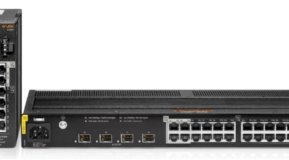Most networking groups have a wireless guy, maybe two – you might be that person. For years, the rest of the campus network group hasn’t really had to think about what they plugged into the network. Give them a gig port, PoE, probably set up a VLAN and that’s it, wireless sorted.
Because when it all came down to it, it didn’t matter how many wireless users connected to the access point because only one device, the client or the access point, could transmit at one time and a single wireless client is not going to tax a gig port. In fact, the more clients there are on an AP, the less traffic ends up on the wire since they spend more time trying to get a timeslot to transmit, like the seagulls in “Finding Nemo” yelling “Mine, mine, mine.”
 We’re Headed to a New Tipping Point
We’re Headed to a New Tipping Point
Now everyone is talking about 802.11ax, or Wi-Fi 6 as the marketing people are calling it, and it might be time to start caring about what’s plugged into the network. Multi-User MIMO has been enhanced in 802.11ax and access points are coming soon that will be capable of talking to eight clients as once.
802.11ax also borrowed a protocol from LTE, OFDMA, that lets the AP divide up a channel into chunks and transmit to lots of clients at once. Today, similar to 802.11ac, these enhancements only work from the AP to the client (downlink), but in the near future traffic from the client to the AP (uplink) also will be supported. Once that happens, it will be possible for more than 30 clients to all receive data at the same time and then all transmit data back to the network at the same time. Even though 802.11ax isn’t full-duplex, it’s starting to sound more like switching and less like bridging.
More available bandwidth always seems to translate to more bandwidth used. 802.11ax is likely the beginning of the tipping point where access points start to need more than a 1 Gbps network port if we don’t want them to drop traffic.
802.11ax is promising to deliver at least a four times more performance than the previous generation of wireless. Denser deployments with a growing number of wireless clients means the wired access layer could transition to more of a wireless aggregation with a dozen or more high-capacity high-performance APs homing back to every wiring closet. 10-Gbps backhaul from the access layer might be safe for now, but 802.11ax may be the beginning of the end of gig links on the edge.
What to learn more about 802.11ax multi-user performance enhancements? Read "802.11ax – Wait, Did We Just Build a Wireless Switch?"




